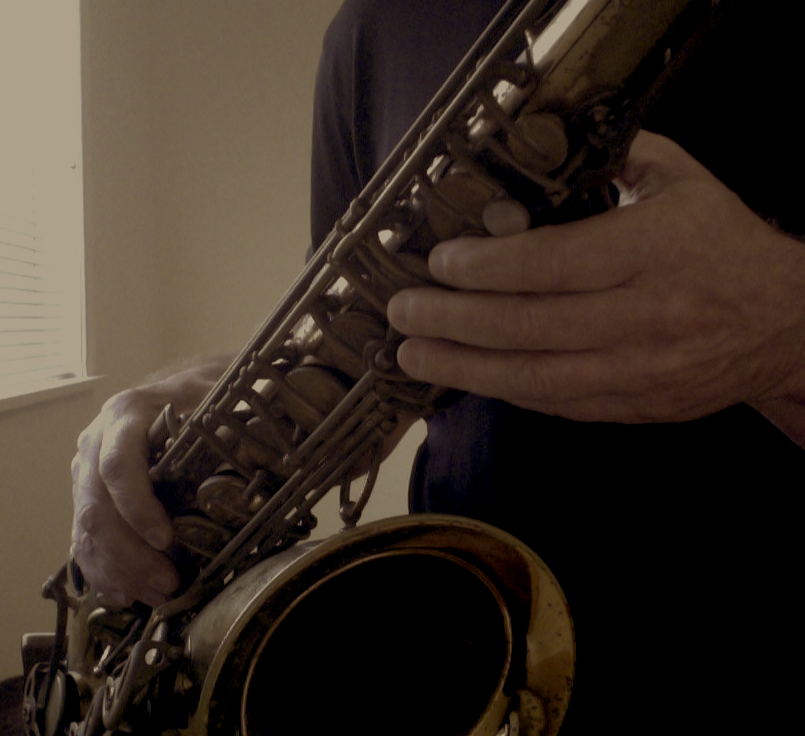Playing music involves movement. No matter what instrument you play (even your voice!) you have to be able to move to make music. How would you describe the quality of your movement when you play music? Are you fluid and free, or are you somewhat stiff and strained? Do you “plant” yourself in one position, or do you sort of “dance freely” as you play? I notice in myself that as time goes by I tend to be a bit more still as I practice and perform music.
Some years back you could see me flying all over the place as I played, going up and down, side to side, twisting in rotation, raising and lowering my saxophone as I followed the dynamics of my musical expression. What you’d likely see when I perform now is relative stillness. Yet, ironically, I’m far less stiff in my stillness than in my excessive movement. I still move as I play, but usually not much more than a gentle sway that ebbs and flows with the music.
To be clear, I think it’s okay to move around a lot when you play music. But I don’t think it’s a good idea to confuse movement with freedom and ease. In my own case, a great deal of these movements of “expression” were primarily patterns of tension trying to hide the fact that I was not comfortable with stillness. Stillness (I believed) was the same as stiffness. (I also find this to be the belief of many of the musicians to whom I teach the Alexander Technique.)
For me this was largely because I never really learned to find balance as I played: Locked knees, tight shoulders, stiff neck and strained breathing to name but a few of my habits. I was in a constant battle with gravity. As I began to study the Alexander Technique, I gradually began to find true, reliable balance. And over time I found myself being in a state of easy stillness as I played.
Watch this video of the legendary jazz saxophonist Charlie Parker as he improvises a stunning solo over the tune, “Hot House”, from 1952. He’s certainly moving as he plays.
But notice what he’s not doing: He’s not hoisting his shoulders up toward his ears; he’s not collapsing or raising his chest; he’s not pulling his arms tightly inward toward his body; he’s not craning his head forward.
For sure he’s gently swaying with the music, but not in any kind of excessive manner. His movement looks organic and natural. He’s relatively still, but not at all stiff. Even on (or especially on!) his blindingly fast passages he is calm, balanced (notice his hands, too) and completely present:
As Parker plays you can see that he stays in balance with his movement. His head is always poised above his pelvis. And you can easily get a sense that he could move in any direction he wanted. He’s not locked down. All this supports his playing, providing a fluid yet stable foundation for him to work. All his energy is directed efficiently into the act of making music.
You could easily contrast his playing to other saxophonists (who shall remain nameless) who flail like mad in what looks like a series of ever-stiffening contortions. Even if they play well (and many do!), I think it’s fair to say that their postural and movement habits don’t support their performance. Specifically, they are not directing their energy efficiently towards the act of making music.
So think about what you do as you play. If you’re moving a lot, see if you can notice any excessive tension as you move. Do you move from one strained posture to the next? See what happens as you become still and play. Do you get uncomfortable? If so, ask yourself “why?” It might be because you’re unable to find balance and stability in stillness. If that’s the case you can begin to seriously consider how you’re dealing with balance as you play.
Conversely, if you barely move a muscle as you play, ask a similar question: “Am I holding myself here in this position with a good deal of effort?” See that your jaw is not clinched, that your neck is free and that your shoulders are balanced over your ribs. Make sure you’re not locking your knees and holding your breath.
If you continue to explore the quality of your movement as you play, you’ll open a door to not only a less stressful way to make music, but also to greater expression and clarity.
